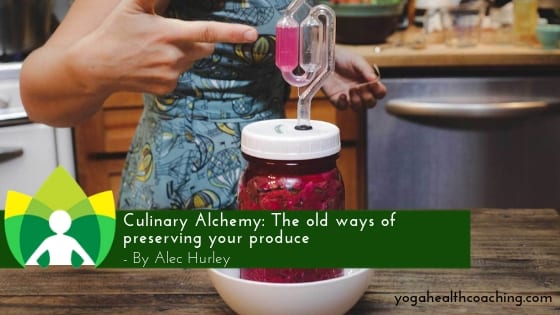
Culinary Alchemy: The old ways of preserving your produce
A new year has come with another 365 opportunities to align yourself to seasonal foods and traditional preparation. If you are ready to get back on the bus of deep nourishment and lost traditions, this recipe might be the inspiration you are looking for.
I was born and raised in the south. My family definitely loved to cook and I began to learn from a young age how to prepare food from scratch. Growing up I learned how to make fried catfish, grits, fried okra, and boiled peanuts. We ate vegetables, and they were delicious. But I didn’t have the same affinity for them as I do today. I also wasn’t raised with any traditional food preparation around fermenting and preserving which would have added so many new characteristics and unique tastes to the plain-jane vegetables.
Rediscovering A Lost Art
Fermentation dates back thousands of years- each early civilization around the globe had their culinary specialty unique to the local ecosystem. This food preservation process is the ultimate collaboration with nature- in geographic areas having poor sanitation, fermented foods have helped the locals fight food-borne illnesses.
After the advent of convenient, packaged, processed and even fresh frozen food, much of our shared traditions of preserving was set aside and forgotten. When I began to explore my southern roots I found a love for the traditional recipes around preserving, pickling and fermenting. These are the time tested processes that keep the fresh flavor of the produce while introducing very healthy microbes to the food. You can think of this as our ancestor’s version of modern day probiotics. This global tradition of preserving and fermenting foods has been keeping our heritage healthy with small amounts of immune supporting microbes.
How Basic Fermentation Works
The most basic way to ferment is with salt. When salt is added to a jar filled with a produce item, it creates an environment where the good bacteria can begin to break down sugars into lactic acid, aka lacto-fermentation. The lactic acid begins to act as a preservative while adding deeper flavor. This process also prevents the growth of pathogenic bacteria. It is a delicate dance between what is not enough and too much salt. If there is not enough then the pathogenic micro-organisms will have a great chance to take over and conquer the produce, leaving you with an inferior product that tastes down-right awful. Too much salt and no bacteria will begin to populate.
More Than Just a Pickle
Combining flavors, spices, and vibrantly colored produce is an art. A delicate blend of ingredients that has the potential to please all of the senses, creating a state of euphoria and deep connection to nature. Food combining is about what works together- a love for the intelligence of nature and goes deeper into appreciating the microbes and nutrients within the soil.
When we look at our ancestors they ate what was available when it was available because they had no other option. There is trust that nature is collaborating with us, supplying what we need to stay balanced all year long. When you adjust your food choices to meet that of seasonal availability and combine small amounts of fermented food in your diet, you are choosing to participate in the collaboration we have with nature, fostering the health of your ecosystem inside and out.
Fermenting Your Own Favorite Veggies.
What you will need
- Your favorite seasonal organic vegetables. Root vegetable are great but don’t be afraid to get creative using different types of stalks and even hearty greens.
- Salt
- A few glass jars with tight-fitting lids.
- Clean water.
How to do it.
- Be sure your jars, lids and utensils and workspace are clean.
- Lightly wash the produce. You want to keep as much of the good bacteria on the veggies as possible so don’t use soaps or sanitizer.
- Cut the veggies into desirable pieces so that they fit into the jars nicely.
- Dissolve 2Tbs of salt into a quart of clean water to make a brine.
- Pour the brine over the veggies until they are covered, being sure to leave 2 inches of space from the top.
- Make as much brine as you need to cover the amount of vegetables you wish to ferment.
- Close the lids and let rest in a cool place out of direct sunlight.
How long does it take?
This depends on the temperature of where your fermentation is taking place. The cooler it is the longer it will take. The warmer it is, the faster the fermentation will take place. A good starting place is to check the flavor of your veggies at three days. They should begin to have a small amount of effervescence in the liquid and a slightly tangy flavor. From here it is all preference. You can halt or slow down the process by placing the jar in a refrigerator, or keep it going for longer.
Pro tip!
Always use clean utensils to grab your veggies when tasting your ferments. This will help prevent any pathogenic microbes from spoiling your goodies!
Another pro tip!
Try adding your favorite spices and herbs to create unique tastes.



